Super Cheap Hokkaido: The Ultimate Budget Travel Guide to Sapporo and the Hokkaido Prefecture (Ebook)
Super Cheap Hokkaido: The Ultimate Budget Travel Guide to Sapporo and the Hokkaido Prefecture (Ebook)
Couldn't load pickup availability
Super Cheap Hokkaido is the perfect companion for a budget holiday to Sapporo and the surrounding Hokkaido prefecture. A follow-up to the bestselling Super Cheap Japan guidebook, this book will show you exactly how, where and when you can save money on your trip. Spend next to nothing drinking local beer in Sapporo, relax in free hot springs, spend a cheap day’s hiking in the mountains or stuff yourself on inexpensive, yet super fresh sushi and sashimi; it’s all here in this amazing travel guide.
Inside the Super Cheap Hokkaido travel guide:
- Budget food – comprehensive listings of low-cost restaurants, take-outs, cheap roadside stations and supermarkets, so you’ll always be able to eat on the cheap,
- Budget shopping – 100 yen ($1) shops, how and where to go tax-free shopping, all the best attraction discounts and free sample hotspots,
- Color maps for budget travelers, making it easy and stress-free to get around,
- Highlights and itineraries for those with a rental car or people using discount train passes, so you can keep costs down while exploring all across Hokkaido,
- Essential help for budget travelers – free tours, simple to understand directions, simplified transportation maps and basic Japanese phrases to help you get better prices on your trip,
- Cheap accommodation – the best and cheapest hostels, family-friendly hotels, campsites, mountain lodges, capsule hotels and net cafes.
The Super Cheap Hokkaido travel book is perfect for backpackers, budget travelers, families on a tight budget, students and those who are new to Hokkaido. Explore this spectacular island while keeping your bank balance happy!
Share
- Works on Kindle, Kobo, Nook and all ebook readers & apps
- Free updates of future editions
- DRM-free ePub (ebook) and PDF files provided
Book details
Book details
File types: ePub (DRM-Free) and PDF
ISBN: 9781913114015
Publication date:
Written by Matthew Baxter
Illustrated by Arabelle Majan
Locations covered
Locations covered
Cherry blossom spots, Sapporo, Otaru, Niseko, Noboribetsu Onsen, Toyako Onsen, Hakodate, Onuma Park, Matsumae Castle, Daisetsuzan National Park, Asahikawa, Furano, Biei, Asahidake, Sounkyo Onsen, Fukiage Onsen, Akan Mashu National Park, Kushiro Marshlands, Lake Mashu, Kawayu Onsen, Shiretoko National Park, Shiretoko National Park, Abashiri
File delivery
File delivery
For ebooks, you will get an email with a link to download the ebook, or you can simply follow the quick instructions to send it to your preferred device.
How do I read the ebook
How do I read the ebook
You can read the ebooks on any e-reader (Amazon, Kobo, Nook), your tablet, phone, computer, and/or in the free Bookfunnel app.
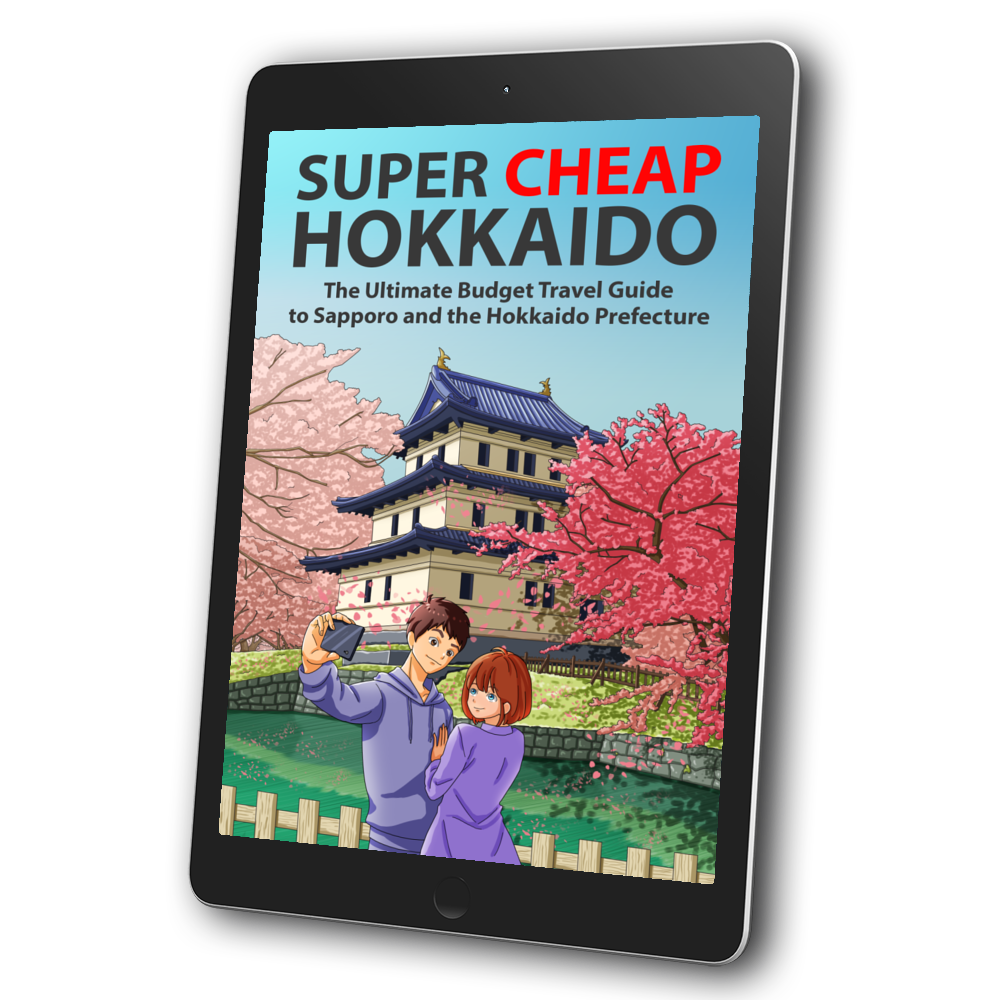
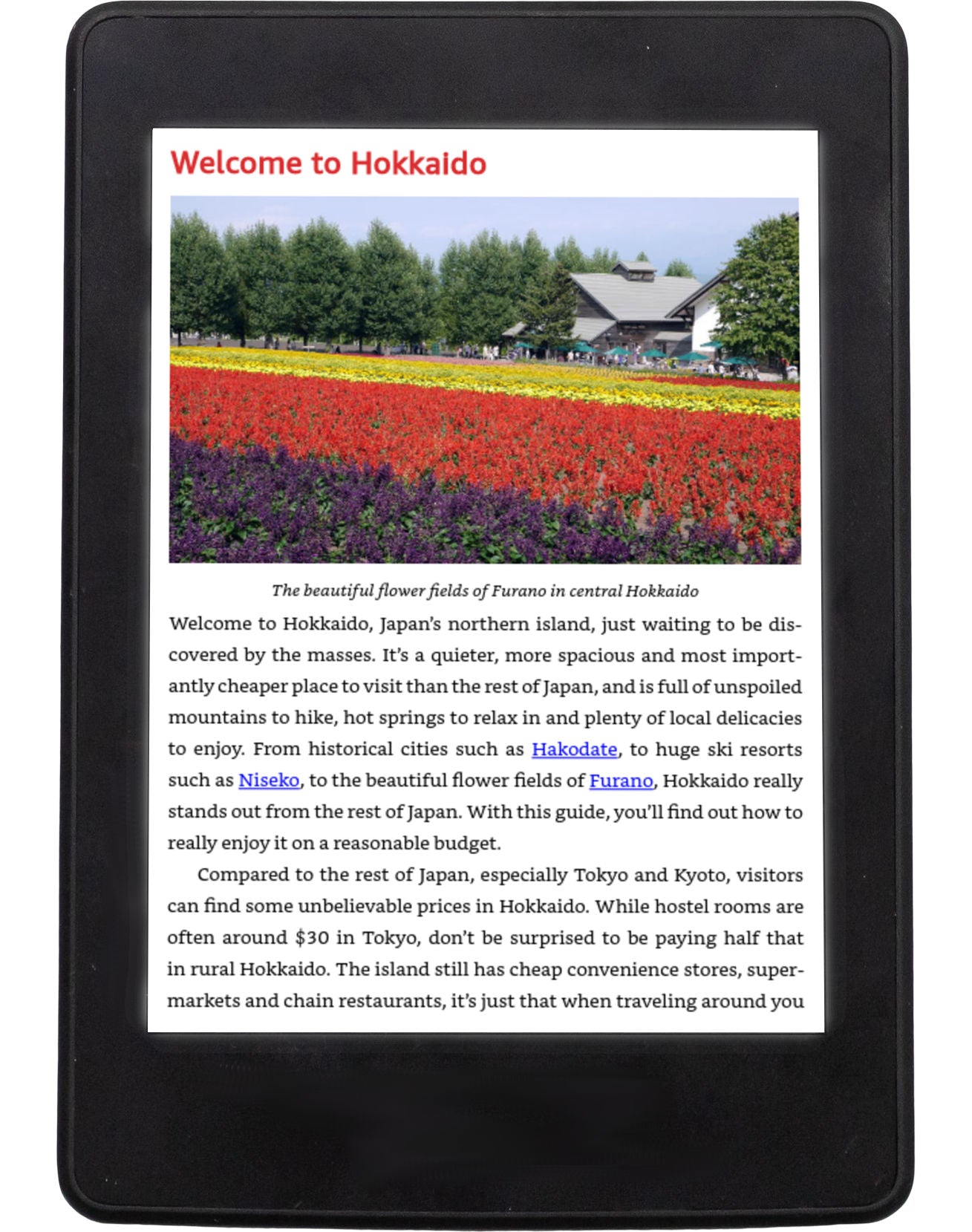

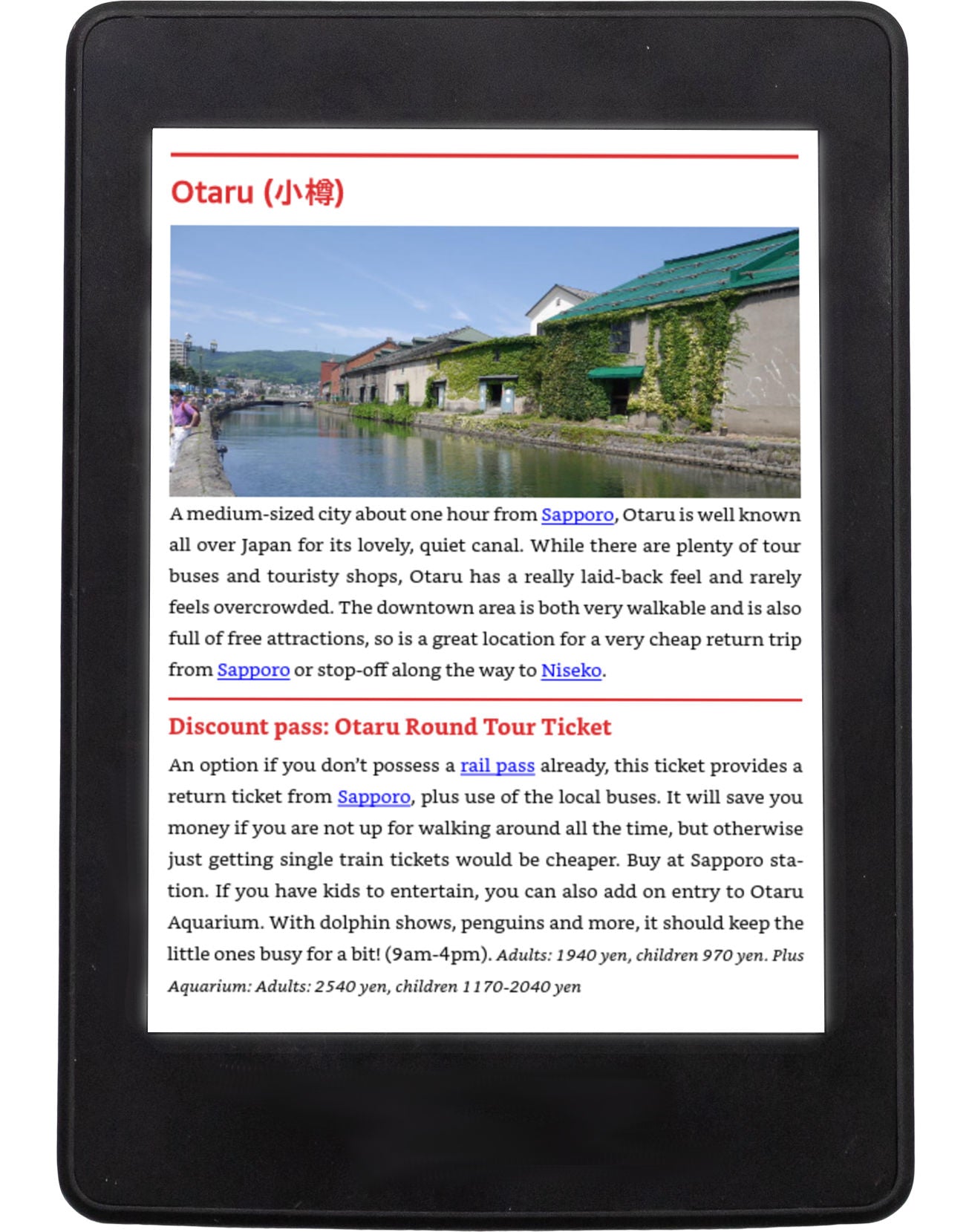
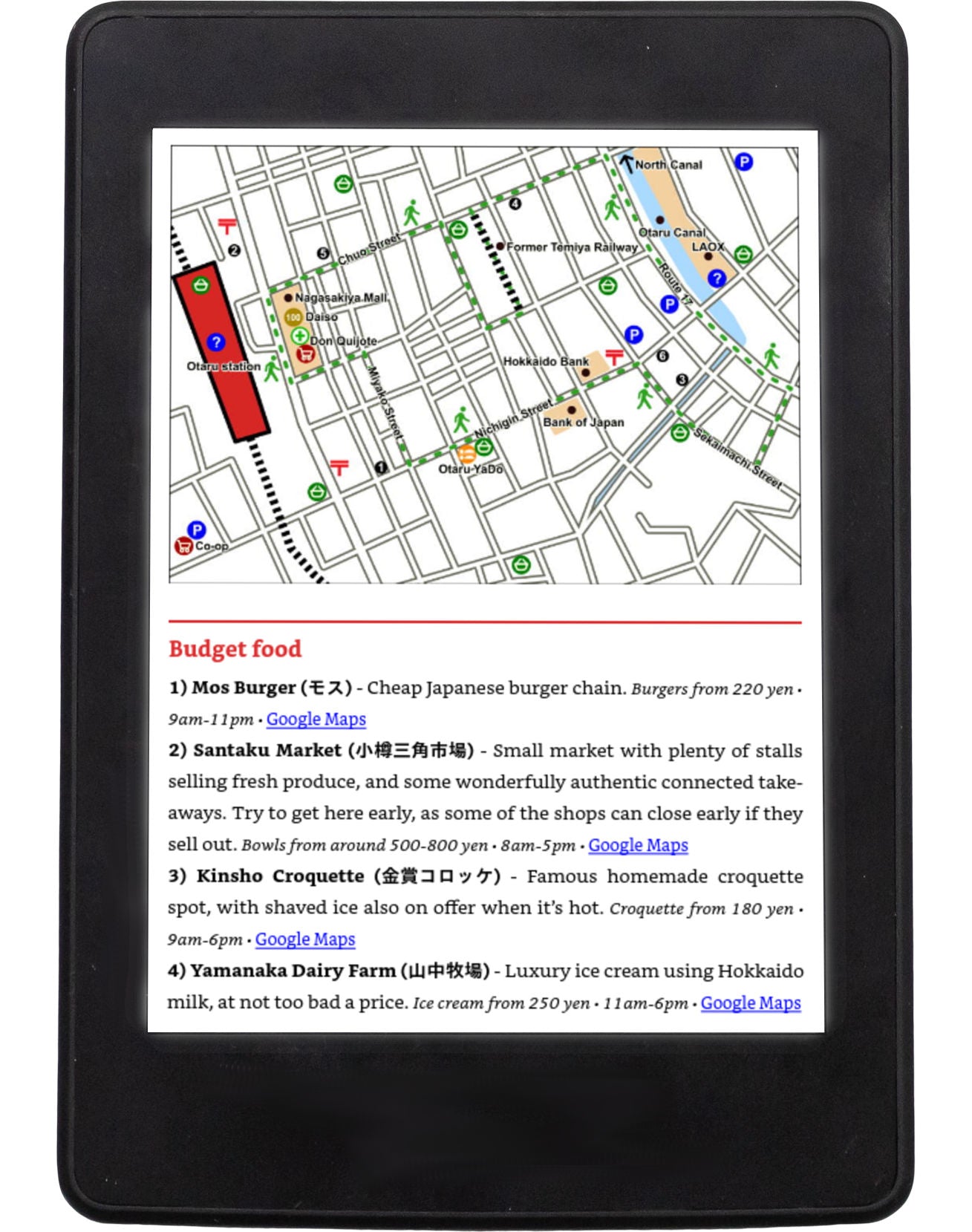
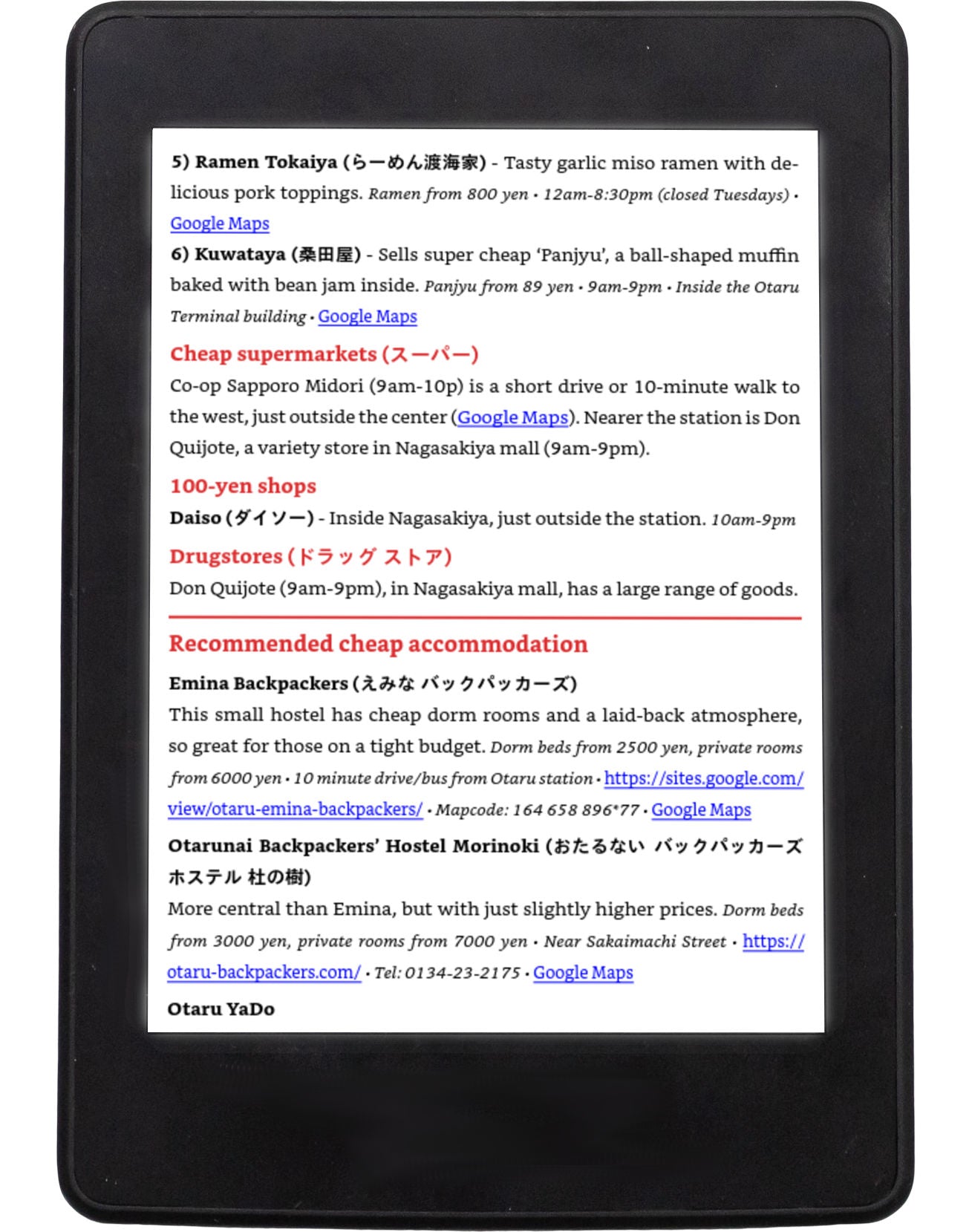
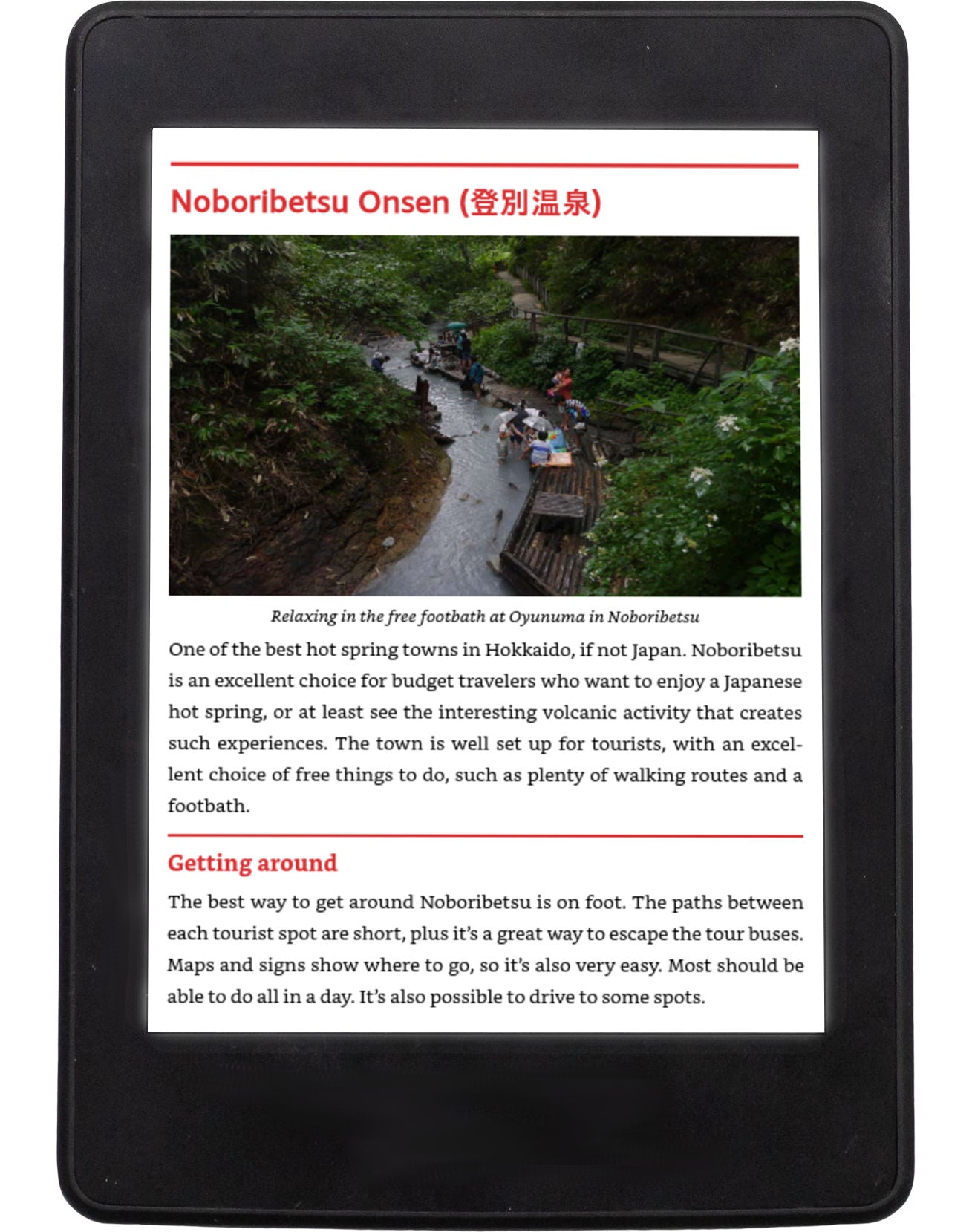
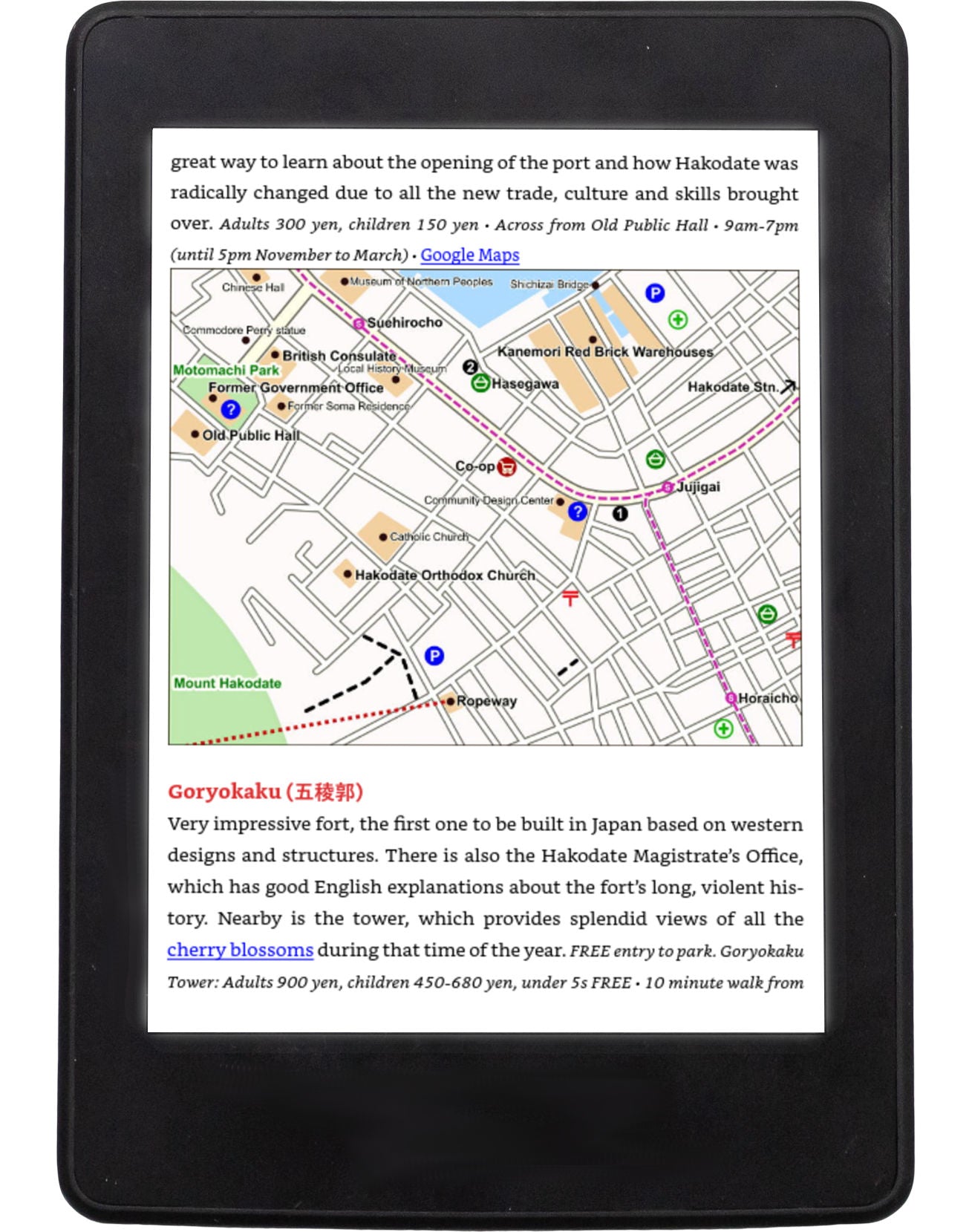
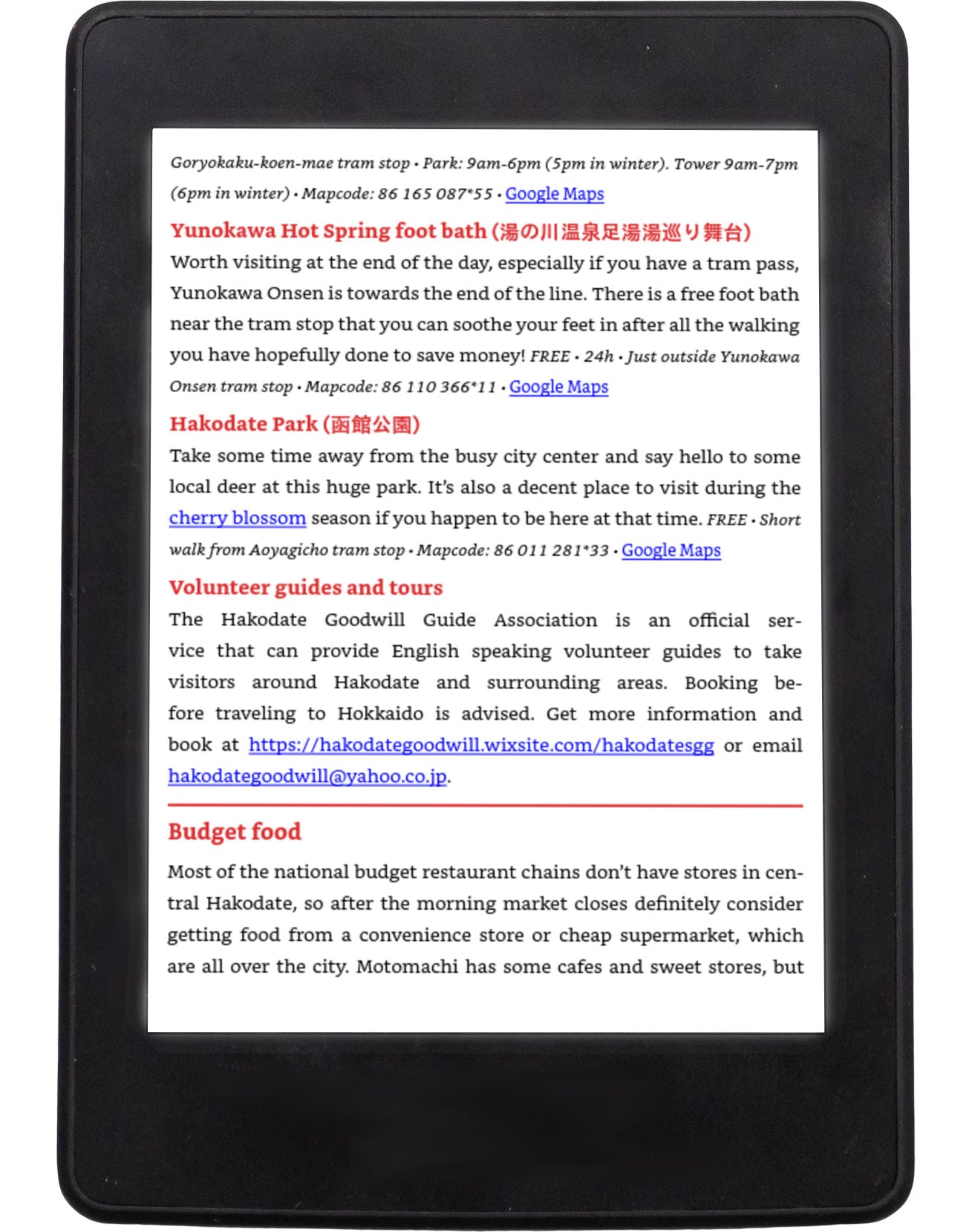
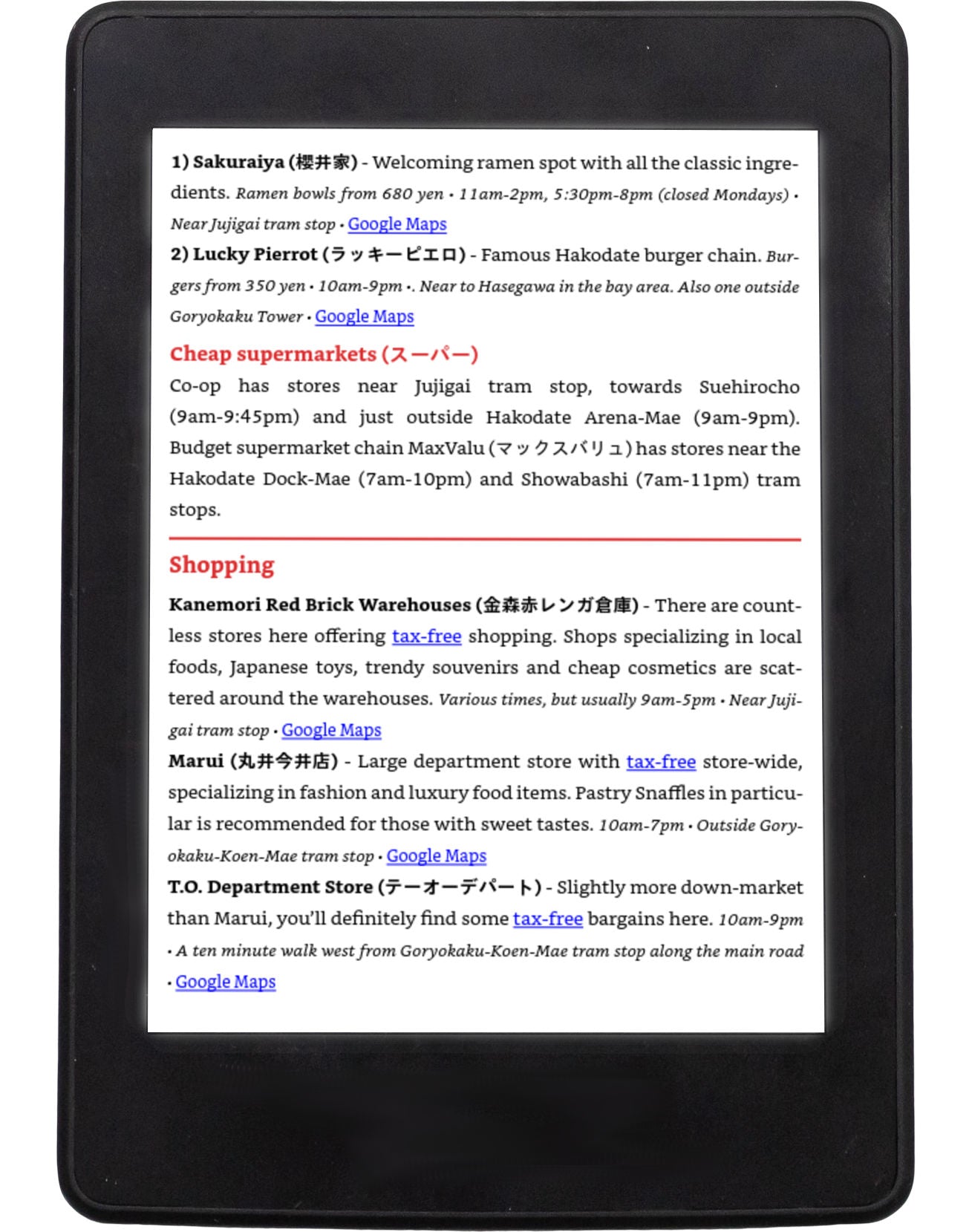
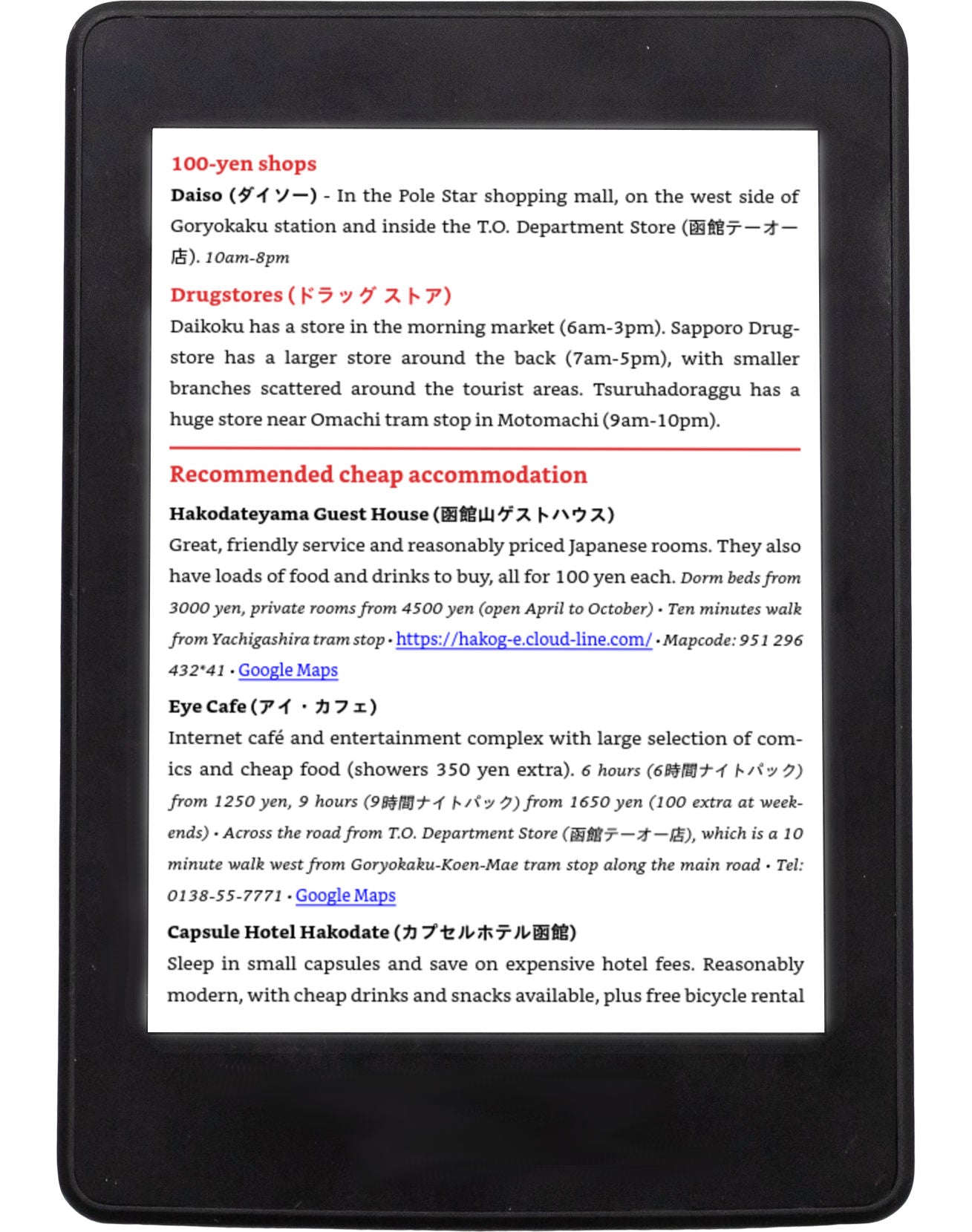

Good
Nicely written and very informative. Nice size, easy to carry around and use for reference.
Hokkaido generally isn't as well traveled by foreigners so this book is a great step in a generally unexplored area
I found this book to be really helpful! The maps were excellent and the images exciting, some of the photos were especially spectacular. Hokkaido has a lot to offer. The information provided was easy to read which makes it ideal for moving on the go - you won't get bogged down by too much information. It's the perfect guide if you want something quick to go to.
Since moving to Sapporo from Tokyo–surviving off of my last paychecks until I found a new job– this guide was what I needed! I'm not exactly a backpacker in my 20s anymore, but I do spend many of my days hanging out at a hostel, often answering questions from budget-conscious travelers. If you're looking for Michelin star restaurants, this isn't for you. But if cup ramen and bunk beds is more your style, this is the best budget travel guide I've found for Hokkaido.
I haven't traveled that much in Hokkaido yet- this book gave me some ideas for where I can take my girlfriend on day trips. This guide is full of useful tips on how to make your budget stretch as long as possible. Japan is beautiful, but all of us who live here know that traveling in Japan can be expensive. This book will give you lots of ideas of what you can do and see for free or in the 100 - 1000 yen price range. I learned about travel destinations, hot springs, and festivals I had never heard of: "The Bellybutton Festival", Odori Beer Garden, and all the discounted transportation pass options (some of which I can't buy because I live here.) Also, it will give me ideas for when I have family or friends visiting from the US or Tokyo. Ever since I bought this book, I've wanted to go to Furano just to try the lavender and melon ice cream! !
Having bought and used the author's two previous Super Cheap guides on Japan and Tokyo, I was delighted to see that he had now written a guide to Hokkaido, Japan's most northern island. With the opening of the Hokkaido Shinkansen (bullet train), the island will be easier to visit, so perfect timing with the publication of Super cheap Hokkaido!
What I really enjoy about these Super Cheap Guides is the attention to detail; the maps are clear and easy to use and the way to navigate the different sections of the book, super straight forward. There is useful advice on when to visit Hokkaido and helpful suggestions for possible itineraries and best apps to use and discount passes and tickets. This book is a must if you want to explore a less well known part of Japan .
Good for planning your trip; especially if one is on a budget.
Good for planning your trip; especially if one is on a budget.
I took this book along for a ski trip this spring. It worked fairly well but for whatever reason I expected it to be a thicker book.
Dear Josh,
Many thanks for your review and comments. Based on your review, I have added a few more chapters to the recent update. You can download it for free via the link provided in your original order confirmation. Alternatively, please get in contact with me and I'll send it over.
Kind regards,
Matthew















